15 Panfish Fishing Secrets: Easy Catches for Beginners & Pros
By Adam Hawthorne | Last Modified: April 29, 2025
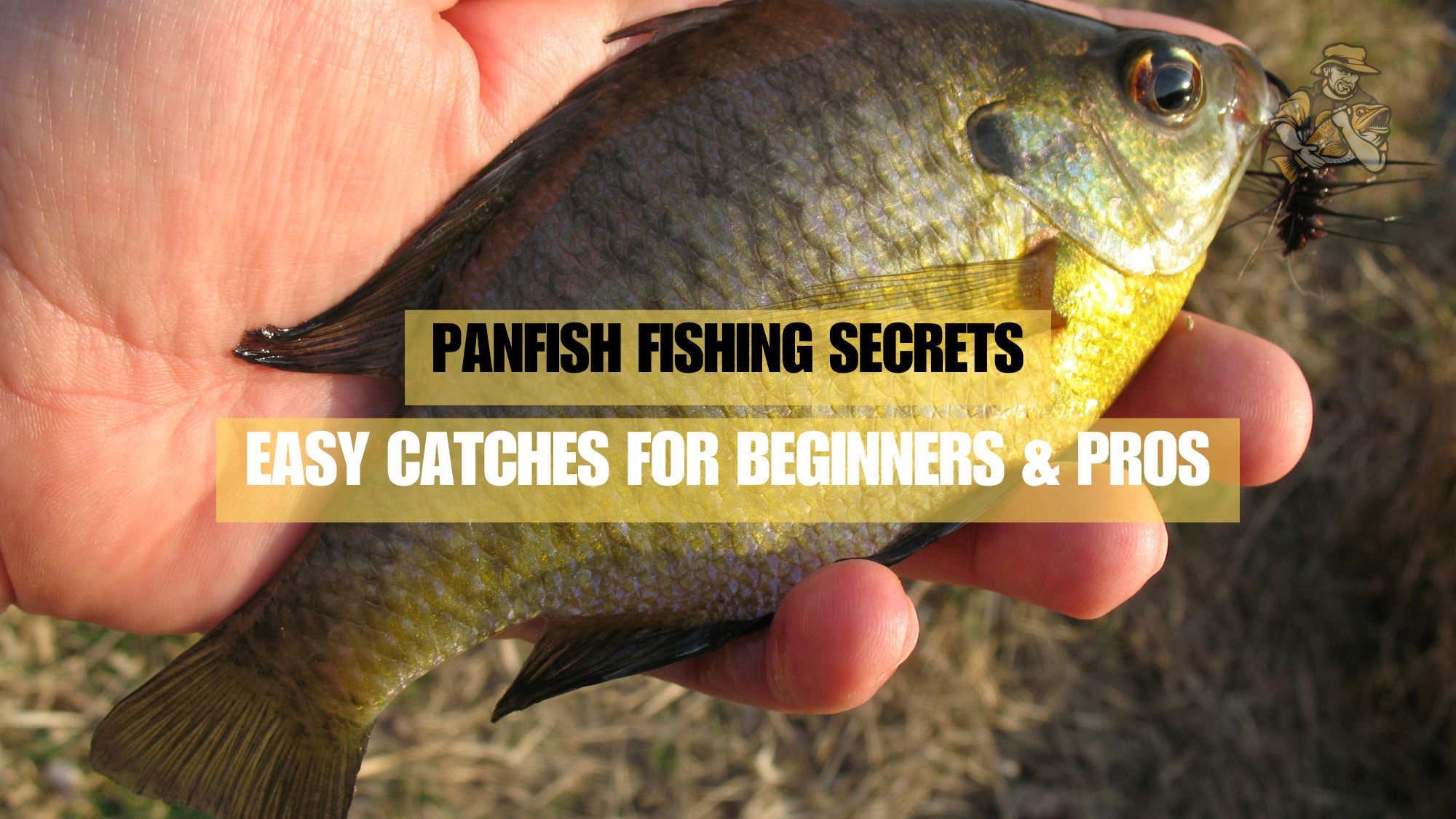
You know what’s funny about panfish? These little fighters have probably hooked more new anglers than any other species, yet I still see experienced fishermen struggle to catch them consistently. I’ve been chasing these colorful little battlers for over three decades now, and I’m still learning new tricks.
Just last summer, I watched a guy with about $1,000 worth of bass gear get completely outfished by his 8-year-old daughter using a $20 Walmart combo and a container of worms. The look on his face was priceless – somewhere between pride and complete bewilderment.
Panfish – which include bluegill, crappie, perch, pumpkinseed, and several other species – might be small, but they’re the perfect blend of accessibility and challenge. They’re abundant, eager to bite, and downright delicious on the dinner table.
Panfish Fundamentals: What Beginners Need to Know
First things first – when we talk about panfish, we’re generally referring to a group of smaller fish species that literally “fit in a frying pan.” The most common panfish in North American waters include:
- Bluegill
- Crappie (black and white)
- Yellow perch
- Redear sunfish (shellcrackers)
- Pumpkinseed sunfish
- Rock bass
- Green sunfish
What makes these fish so perfect for anglers of all skill levels is their abundance and willingness to bite. You’ll find panfish in nearly every freshwater system – from farm ponds and small lakes to rivers and reservoirs.
Before we dive into the secrets, understand that panfish behavior changes dramatically with the seasons. In spring, they move to shallow waters to spawn. Summer finds them relating to structure and cover. Fall sees them feeding heavily to prepare for winter, and winter drives them to deeper water with stable temperatures.
I learned this seasonal pattern the hard way back in ’98 when I kept hitting the same shallow coves in August that had produced limits in May. Took me three fishless trips to figure out the fish had moved to deeper water near the thermocline. Rookie mistake.
1. Use Light Tackle for More Bites and Better Action
This might seem obvious to veterans, but I can’t tell you how many folks I see trying to catch panfish with their bass or walleye setups. Using ultralight gear isn’t just about matching the size of the fish – it’s about presentation and sensitivity.
My go-to panfish setup is a 5’6″ ultralight rod paired with a 1000-size spinning reel spooled with 4-pound test monofilament. For crappie specifically, I might go a bit longer – a 7′ light action rod gives better control when fishing with small jigs around structure.
The lighter the line, the more natural your bait will appear, and the more bites you’ll get. Yes, you might break off on the occasional larger fish, but the trade-off is worth it. I learned this lesson from an old-timer named Carl who fished the same local pond I did. He consistently outfished me 3-to-1 until he took pity and showed me his setup. He was using 2-pound test while I was using 6!
If you’re just starting out, don’t feel like you need to spend a fortune. A $30-40 combo will work just fine for your first season. Then, if you get hooked on panfishing like I did, you can upgrade to something nicer.
2. Master the Art of Small Bait Presentation
Panfish have small mouths, which means they prefer small baits. This seems straightforward, but the devil’s in the details.
Live bait is hard to beat for panfish, with these top options:
- Red worms (my personal favorite)
- Wax worms
- Mealworms
- Crickets
- Small minnows (especially for crappie)
But here’s the thing about live bait that took me years to figure out – how you hook it matters tremendously. For worms, I use just a small piece, hooked once through the middle. This leaves both ends free to wiggle enticingly. For crickets, hook them through the thorax (the middle section), which keeps them alive longer and maintains their action in the water.
My fishing buddy Dave swears by hooking minnows through the lips for crappie, but I’ve had better luck hooking them just behind the dorsal fin when fishing deeper water. The minnow will swim downward when hooked this way, keeping it in the strike zone longer.
As for artificial baits, these work surprisingly well for panfish:
- 1/32 to 1/16 oz jigs with soft plastic bodies
- Small spinners (size 0 or 1)
- Tiny crankbaits
- Micro-sized plastic worms
The key with artificials is slow retrieval with plenty of pauses. Panfish often hit during the pause, so be ready.
3. Find Structure and Cover for Consistent Success
Panfish love structure and cover – it’s as simple as that. But not all structure is created equal, and this is where casual anglers miss out on consistent action.
In my local Michigan lakes, I focus on these high-percentage spots:
- Docks and piers (especially those with deeper water access)
- Weed edges and pockets within weed beds
- Brush piles and fallen trees
- Riprap and rocky areas
- Drop-offs near shallow flats
One spring morning about five years back, I was fishing a small lake near Traverse City that I’d never visited before. Wasn’t having much luck until I noticed a submerged tree that had fallen into the water the previous winter. First cast near that tree – instant bluegill. Ended up pulling 23 nice-sized ‘gills from that single piece of structure.
The trick is to methodically work the edges of structure rather than just casting randomly. Panfish use structure differently throughout the day too. Early morning and evening, they might be more active near the outer edges. Midday, especially in summer, they’ll tuck deeper into cover to escape predators and bright light.
4. Go Small or Go Home With Terminal Tackle
Hook and weight size can make or break your panfish success. I cringe whenever I see someone trying to catch bluegill with a size 6 hook. You’re setting yourself up for frustration.
For most panfish situations, I use:
- Hooks: Size 8-12 for bluegill and other sunfish, size 4-8 for larger crappie
- Weights: 1/32 oz to 1/8 oz, depending on depth and current
- Bobbers: The smallest that can support your bait and weight
Speaking of bobbers (or floats, if you prefer), they’re not just bite indicators. They’re depth-control tools. The ability to present your bait at precisely the right depth is often the difference between a few random catches and a limit of fish.
I keep at least three types of bobbers in my panfish box:
- Pencil-style slip bobbers for adjustable depths
- Small round fixed bobbers for shallow fishing
- Spring-loaded bobbers for ultra-light bite detection
That last one – the spring-loaded style – was a game-changer that my neighbor Mike introduced me to. The increased sensitivity means you’ll detect even the lightest nibbles, which is crucial during cold fronts or when fish are feeding tentatively.
Advanced Panfish Tactics Most Anglers Miss
Now we’re getting to the good stuff. These next tactics separate the occasional panfish angler from those who consistently fill coolers with quality fish.
5. Understand Spawning Behaviors for Trophy Panfish
The spawn is prime time for targeting trophy panfish, especially bluegill and crappie. But there’s a right way and a wrong way to approach it.
Bluegill typically spawn when water temperatures reach 65-75°F, usually in late May through June in the Midwest. They create distinct circular beds in shallow water, often in colonies. The largest males guard these beds aggressively.
Crappie spawn a bit earlier, usually when water temps hit 56-65°F. Unlike bluegill, they often spawn around brush, fallen trees, or other cover in 2-8 feet of water.
The key to trophy fish during spawn is targeting the right beds. Smaller bluegill might create beds in just a foot or two of water, but the true trophies typically spawn a bit deeper – 3 to 5 feet. These deeper beds are less visible and often overlooked.
Two springs ago on Lake Leelanau, I found a massive bluegill spawning colony on the north end of the lake in about 4 feet of water. Most anglers were focused on the obvious beds near shore, but by taking my small boat out just a bit further and using polarized glasses to spot the deeper beds, I caught bluegill up to 10.5 inches – true trophies by any standard.
When targeting spawning crappie, focus on cover near deeper water transitions. My most productive crappie spot on Lake Missaukee is a fallen oak tree that extends from the bank into about 7 feet of water. The crappie stage on the deeper end before moving in to spawn, and they stick around that tree for weeks.
6. Master the Seasonal Movements for Year-Round Success
Most casual anglers only fish for panfish during the obvious spring and early summer periods. But understanding their seasonal movements can turn panfish into a 12-month proposition.
Summer Patterns: Once the spawn concludes, panfish follow relatively predictable patterns. Early and late in the day, they’ll often feed in shallow water – 2 to 8 feet depending on the lake. As the sun gets higher, they retreat to deeper water or tighter cover.
During hot summer days, I focus on:
- Deep weed edges in 8-15 feet of water
- Docks that provide shade
- Deeper brush piles
- The thermocline in deeper lakes (usually 12-20 feet down)
Fall Feeding Frenzy: Fall is criminally underrated for panfish. As water temperatures cool, panfish feed heavily to prepare for winter. They often school more aggressively and move to predictable locations.
My best fall pattern is targeting the remaining green weeds in 8-12 feet of water. As surface vegetation dies off, remaining healthy weed beds concentrate both food and predators. Some of my largest bluegill have come in October when most anglers have already winterized their boats.
Winter Locations: Ice fishing for panfish is a passion of mine. The first ice period (about the first two weeks after safe ice forms) can be incredible for shallow water panfish. They often return to areas similar to their spring locations.
Mid-winter generally pushes panfish to deeper basin areas, especially in lakes with limited oxygen. In my local lakes, finding the 18-25 foot contour with a soft bottom is usually the ticket to consistent winter action.
The pre-spawn period in late winter/early spring often finds crappie suspending over deeper water but near their eventual spawning areas. My favorite late-ice tactic is drilling holes over the deep water adjacent to spawning bays, where 12-14 inch crappie often stage.
7. Crack the Code on Water Clarity
Water clarity has a massive impact on panfish behavior and feeding, yet most anglers completely ignore this factor. I adjust my entire approach based on water clarity:
Clear Water (visibility 6+ feet):
- Use lighter line (2-4 pound test)
- More natural colors (browns, greens, smoke)
- Smaller baits
- More subtle presentations
- Fish deeper or in available cover
Stained Water (visibility 2-5 feet):
- Slightly heavier line (4-6 pound test)
- More visible colors (chartreuse, orange, white)
- More action in your presentation
- Slightly larger baits for more visibility
Muddy Water (visibility less than 2 feet):
- Focus on shallow water where fish can see your bait
- Use vibration and scent to help fish locate your offering
- Bright, bold colors like firetiger or hot pink
- Larger profile baits that push more water
Back in 2019, we had tremendous spring rains that turned my favorite lake into chocolate milk. Most anglers were struggling, but I switched to a small spinner with a chartreuse body and added a bit of worm for scent. The combination of flash, vibration, visibility, and smell led to a 43-fish day when others were blanking.
8. Explore the Overlooked Middle Depths
There’s a saying among serious panfish anglers: “Fish deep or fish shallow, but don’t waste time in between.” I believed this for years until a day on Lake St. Clair changed my perspective.
I was fishing with my buddy Tom who kept catching quality redear sunfish while I was struggling. The difference? He was targeting the 6-10 foot range with small jigs while I was focusing on either shallow docks or deep weed edges.
What I’ve since learned is that the middle depths – roughly 5 to 12 feet depending on the lake – often hold quality fish that see less pressure. These aren’t the easy shallow fish that every casual angler catches, nor are they the deep summertime schools that experienced anglers target.
This middle zone is particularly productive during transitional periods:
- Post-spawn when fish are leaving shallows but haven’t settled into summer patterns
- Early fall when they’re starting to move from deep summer haunts
- Early morning before fish move shallow to feed
- After cold fronts when fish pull out of shallows but don’t go completely deep
One of my consistent producing spots on Mullett Lake is a subtle flat in 8 feet of water that most anglers drive right over on their way to either the shallows or the deep weed edge. This “in-between” area regularly produces the largest bluegill in the system.
9. Tap Into the Power of Panfish Electronics
If you’d told me 15 years ago that I’d be using $500 worth of electronics to catch 6-inch fish, I’d have laughed in your face. Now? I wouldn’t leave the dock without my fish finder.
Modern electronics have revolutionized panfish fishing, particularly for crappie and yellow perch that often suspend in the water column. You don’t need the most expensive units, but having good sonar capabilities makes a tremendous difference.
What I look for on my electronics:
- Schools of fish at specific depths
- Subtle bottom transitions (hard to soft, small depth changes)
- Submerged structure like brush piles or weed edges
- The thermocline in summer months
- Baitfish schools that predatory panfish follow
Last winter while ice fishing, I watched on my flasher as a single large mark (likely a bass or pike) swam through a school of panfish I was targeting. The school scattered and completely changed depth, moving from 12 feet down to 18 feet in minutes. Without electronics, I’d have been left wondering why the bite suddenly died.
For open water fishing, a basic fish finder with down imaging works great. For ice fishing, a flasher-style unit is my preference for its real-time feedback. You don’t need to spend thousands, but having basic electronics will definitely put more fish in the boat.
10. Discover the Magic of Micro-Jigging
If there’s one technique that’s accounted for more quality panfish in my boat than any other over the past decade, it’s micro-jigging. This technique involves using tiny jigs – typically 1/64 to 1/16 ounce – with subtle rod movements to entice bites.
The beauty of micro-jigging is its versatility. It works year-round, in nearly any depth, and for all panfish species. The key is matching your jig size and profile to fishing conditions and fish activity level.
My micro-jigging setup is specialized:
- 6′ ultralight rod with a soft tip but decent backbone
- 500 or 1000 size reel with smooth drag
- 3-4 pound fluorocarbon line or leader
The basic technique involves dropping your jig to the desired depth, then imparting action through subtle rod movements. I use three main jigging styles:
- Deadstick – Holding the jig perfectly still with occasional slight twitches
- Slow lift – Raising the rod tip 6-12 inches very slowly, then dropping
- Quiver – Imparting tiny vibrations through the rod tip without moving the jig much
One particularly tough day on Burt Lake about three summers ago, nothing seemed to be working for the normally aggressive bluegills. Out of desperation, I switched to a 1/80 oz tungsten jig in black, added just the head of a waxworm for scent, and deadsticked it with only an occasional slight twitch. The result was 17 big bluegills when other boats were struggling to catch anything.
The micro-jigging approach excels during tough conditions – cold fronts, heavily pressured fish, or clear water scenarios when fish are finicky.
Specialized Panfish Techniques Worth Mastering
At this point, I’ve covered the fundamentals and some advanced approaches. Now let’s look at some specialized techniques that can be absolute game-changers in specific situations.
11. Float and Fly for Suspended Winter Panfish
The “float and fly” technique originated in the bass fishing world but has become one of my secret weapons for winter and early spring crappie. This method uses a fixed bobber (usually 8-12 feet above a small hair jig or soft plastic) to target suspended fish.
What makes this technique so effective is that it keeps your offering in the strike zone longer and at precisely the right depth. The long distance between float and fly allows for a more natural presentation, as the jig can move subtly with the slightest water movement.
I first learned this technique from a Tennessee crappie specialist about 8 years ago, and it’s been particularly effective during late winter and early spring when crappie suspend over deeper water adjacent to spawning areas.
My float and fly setup consists of:
- 8-10′ light or medium-light rod
- 6 pound monofilament main line
- Fixed oval-shaped bobber
- 8-12′ of line below the bobber
- 1/16 oz hair jig or soft plastic
The presentation is simple – cast out, let the bobber settle, and wait. Occasionally twitch the bobber to impart subtle action to the jig. The strikes are often very light – just a slight movement of the float.
Last March on Saginaw Bay, I was using this technique in 23 feet of water with my jig suspended at 17 feet. The result was 22 jumbo perch averaging 10-12 inches while nearby anglers vertical jigging were catching smaller fish at a much slower pace.
12. Discover Night Fishing for Trophy Crappie
Most panfish anglers pack up when the sun goes down, missing out on prime time for trophy crappie. Crappie are notorious for feeding heavily during low-light conditions, and true giants often become more active after dark.
Night crappie fishing requires some specialized approaches:
- Lights to attract plankton, which attracts baitfish, which attracts crappie
- Glow-in-the-dark jigs or lures
- More reliance on sound and feel than sight
- Focus on structure near deep water
My night crappie setup typically involves anchoring near a known crappie hangout – usually a brush pile, bridge piling, or deep dock – and deploying a submersible green light. Then I give it 20-30 minutes for the food chain to establish before starting to fish.
I use larger baits at night – usually 1/8 oz jigs with 2″ soft plastics in white, chartreuse, or glow colors. The presentation is slow with plenty of pauses.
Two years ago on Houghton Lake, my son Tommy and I hit the water at 9 PM in late June. Using this exact approach, we boated 27 crappie between 11 PM and 1 AM, with seven fish over 13 inches and a personal best 16-inch white crappie that’s now on my wall. During daylight hours, we’d have been lucky to catch a few fish half that size.
13. Master Trolling for Summer Panfish
Trolling isn’t just for walleye and salmon – it’s an incredibly effective method for locating and catching scattered summer panfish, especially yellow perch and crappie.
During summer, panfish often disperse and suspend at specific depths related to thermocline and food availability. Covering water becomes crucial, and trolling allows you to do exactly that.
For perch, I focus on the bottom interface, trolling small crawler harnesses or jigging spoons just off the bottom at 0.8-1.2 mph. For crappie, I target suspended fish using small crankbaits or jigs under slip bobbers set to specific depths.
My perch trolling rig is simple but deadly:
- Small spinner blade (size 0 or 1)
- Two size 8 hooks tied 2 inches apart
- 1/8 oz weight about 12 inches above the hooks
- Half a crawler or a whole minnow for bait
This is more finesse trolling than most anglers are used to. I use my electric motor rather than my main engine, and I focus on precise depth control and speed.
The 47 perch I caught in 3 hours last August came exclusively from trolling a weed edge in 12-17 feet of water on Grand Traverse Bay. What’s interesting is that we couldn’t catch those same fish while stationary. They wanted the bait moving horizontally along the weed edge at a very specific speed.
14. Try Sight Fishing for the Biggest Bluegill
Sight fishing – visually targeting individual fish you can actually see – is arguably the most exciting way to catch trophy bluegill. It combines hunting and fishing in one addictive package.
The prerequisites for successful sight fishing are:
- Clear water with decent visibility
- Polarized sunglasses (absolutely essential)
- Calm conditions with minimal wind
- Stealthy approach
- Precise casting ability
The technique works best during the spawn when big males are guarding nests, but it can be effective anytime you can spot fish – like when they’re cruising the shallows on calm summer mornings or evenings.
I use a slightly longer rod (7′) for sight fishing to make precise presentations from a distance. The key is spotting the fish before they spot you, then making a presentation that doesn’t spook them.
One trick I’ve learned is to cast beyond the target fish, then slowly bring the bait into their field of vision. A direct cast at the fish will often send them scurrying for cover.
My favorite sight fishing memory happened five years ago on a small inland lake near Petoskey. I spotted a bluegill that looked like a dinner plate hovering near a dock piling. My first cast spooked him, but I waited patiently. When he returned 10 minutes later, I made a perfect cast that landed my tiny jig two feet beyond him and slowly brought it into his strike zone. The resulting 11-inch bluegill remains my personal best.
15. Use Lipless Crankbaits for Jumbo Perch
This last technique is one I’ve only been using for about three years, but it’s been a revelation for targeting truly big perch, especially in the Great Lakes.
Small lipless crankbaits – specifically the 1/8 oz size – have accounted for more jumbo perch in my boat than any other lure type recently. The vibration, flash, and sound these lures produce seems to trigger reaction strikes from the largest fish in the school.
On Lake Erie and Saginaw Bay, I’ve had tremendous success using this approach during late summer and fall when jumbo perch are feeding heavily on small baitfish. I fish these lures with a fairly aggressive lift-drop retrieve, allowing the lure to flutter down on semi-slack line.
My favorite colors are simple – gold, silver, or perch pattern. The technique is to cast out, let the lure sink to the bottom, then use a series of rod lifts to bring it back to the boat. Most strikes come on the fall, so be ready.
Last October on Saginaw Bay, my fishing buddy Mike and I landed 37 yellow perch over 10 inches using almost exclusively this technique. What was fascinating was watching on the fish finder as larger marks (the jumbo perch) would separate from the main school to chase our lures on the upward lift.
This technique isn’t for numbers – you’ll catch fewer perch than you would with live bait – but the average size will be significantly larger. If you’re specifically targeting trophy perch in the 12-15 inch range, this approach is hard to beat.
Panfish Fishing FAQs
What’s the best time of day to catch panfish? Early morning and evening typically provide the best action, especially in warm weather months. That said, panfish can be caught all day long if you adjust your approach. During midday, focus on deeper water or heavy cover where fish retreat from bright light. In cooler months, the middle of the day often produces better than early or late.
Should I use live bait or artificial lures for panfish? Both work extremely well depending on conditions. Live bait typically outperforms artificials when fish are less active or heavily pressured. Red worms, wax worms, and small minnows are hard to beat. However, I’ve had days where small plastics or jigs significantly outperformed live bait, especially when fish are active and feeding aggressively. I always carry both options.
What’s the best way to locate panfish in a new lake? Start by finding structure – docks, weed edges, brush piles, and drop-offs. In spring, focus on shallow bays with darker bottoms that warm up quickly. In summer, look for deeper weed edges and docks that provide shade. Electronics are invaluable for locating schools in open water. Also, don’t be afraid to ask at local bait shops – most are happy to provide general location information.
How do I catch panfish through the ice? Ice fishing for panfish is incredibly effective. Use small tungsten jigs tipped with waxworms, spikes (larvae), or plastics. The key is hole location – drill multiple holes to find active fish. Early and late ice typically finds panfish in shallower water (5-15 feet), while mid-winter often pushes them deeper (15-30 feet). A flasher-style fish finder is almost essential for serious ice fishing success.
What’s the difference in fishing for bluegill vs. crappie? While there’s overlap in techniques, bluegill tend to be more structure-oriented and bottom-feeding, while crappie are often suspended and more pelagic in nature. Bluegill typically prefer smaller baits and are often found tighter to cover. Crappie tend to school more aggressively and prefer slightly larger offerings with more action. For crappie, I focus on transitions and the edges of structure rather than right in it.
What size hooks should I use for panfish? For bluegill and other sunfish, I typically use size 8-12 hooks. For crappie, slightly larger size 4-8 hooks work better. Match your hook to both your bait size and target species. Using hooks that are too large is one of the most common mistakes I see anglers make when targeting panfish.
Final Thoughts on Panfish Fishing Mastery
After more than 30 years of chasing these colorful little fighters across Michigan and beyond, I’m still learning new tricks. That’s the beauty of panfish – they’re accessible enough for a child’s first fishing experience, yet complex enough to keep veteran anglers challenged.
I’m convinced that true panfish specialists are among the most skilled anglers on the water. The precision, finesse, and attention to detail required to consistently catch quality panfish demands more skill than many “glamour” species.
Whether you’re introducing a child to the joy of fishing, putting together a meal of fresh fillets, or challenging yourself to catch trophy-class specimens, panfish offer something for everyone. They might not have the size and power of other game fish, but what they lack in stature, they more than make up for in accessibility, numbers, and pure fishing fun.
So grab your ultralight rod, downsize your tackle, and head to your local panfish hotspot. Chances are good you’ll come home with a smile, and maybe even a meal. And isn’t that what fishing is all about?

Meet Adam Hawthorne
I’m a lifelong fishing enthusiast who’s spent years exploring rivers, lakes, and oceans with a rod in hand. At Fishing Titan, I share hands-on tips, honest gear reviews, and everything I’ve learned about fish and ocean life, so you can fish smarter and enjoy every cast.
Share:

Meet Adam Hawthorne
I’m a lifelong fishing enthusiast who’s spent years exploring rivers, lakes, and oceans with a rod in hand. At Fishing Titan, I share hands-on tips, honest gear reviews, and everything I’ve learned about fish and ocean life, so you can fish smarter and enjoy every cast.
Related Articles
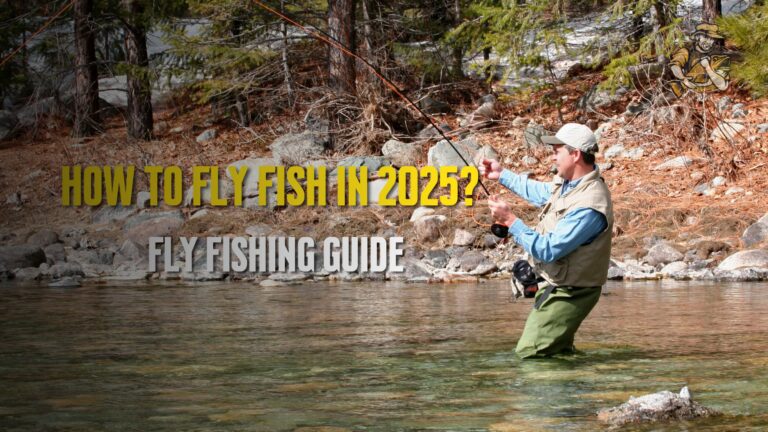
Fly Fishing | How to fly fish in 2025?
Fly fishing has changed a lot since I first picked up a rod back in the mid-90s. The fundamentals remain pretty similar, but the technology,…
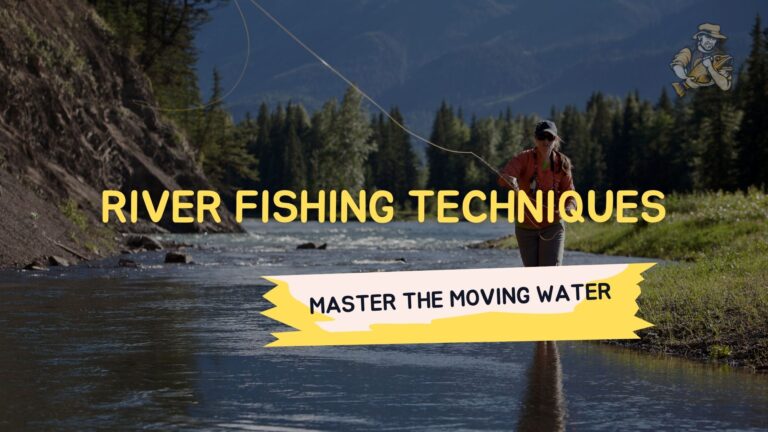
River Fishing Techniques: Master the Moving Water
Fishing rivers presents a unique set of challenges and rewards that I’ve come to appreciate over my three decades casting lines. Unlike lakes or ponds,…
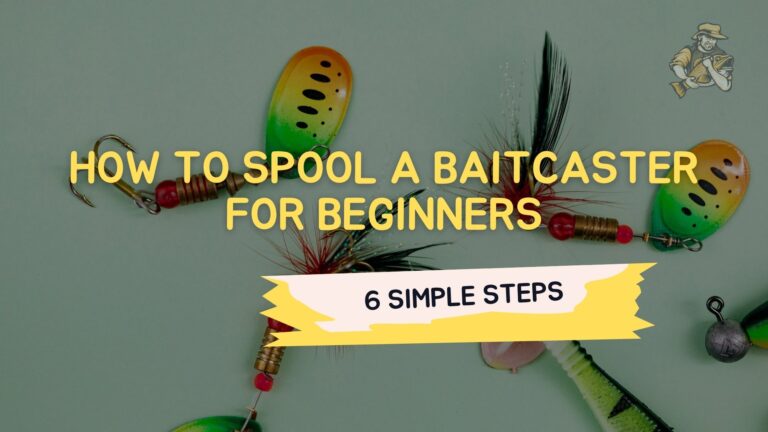
How to Spool a Baitcaster for Beginners: 6 Simple Steps
I remember the first time I tried spooling a baitcaster reel. What should have been a simple 15-minute job turned into a frustrating hour of…
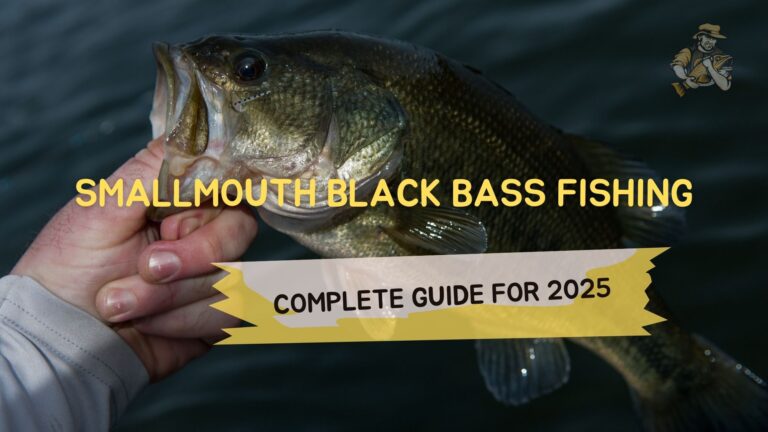
Smallmouth Black Bass Fishing: Complete Guide for 2025
If you’ve ever felt that sudden, powerful tug on your line followed by an acrobatic jump that leaves your heart racing, chances are you’ve hooked…
